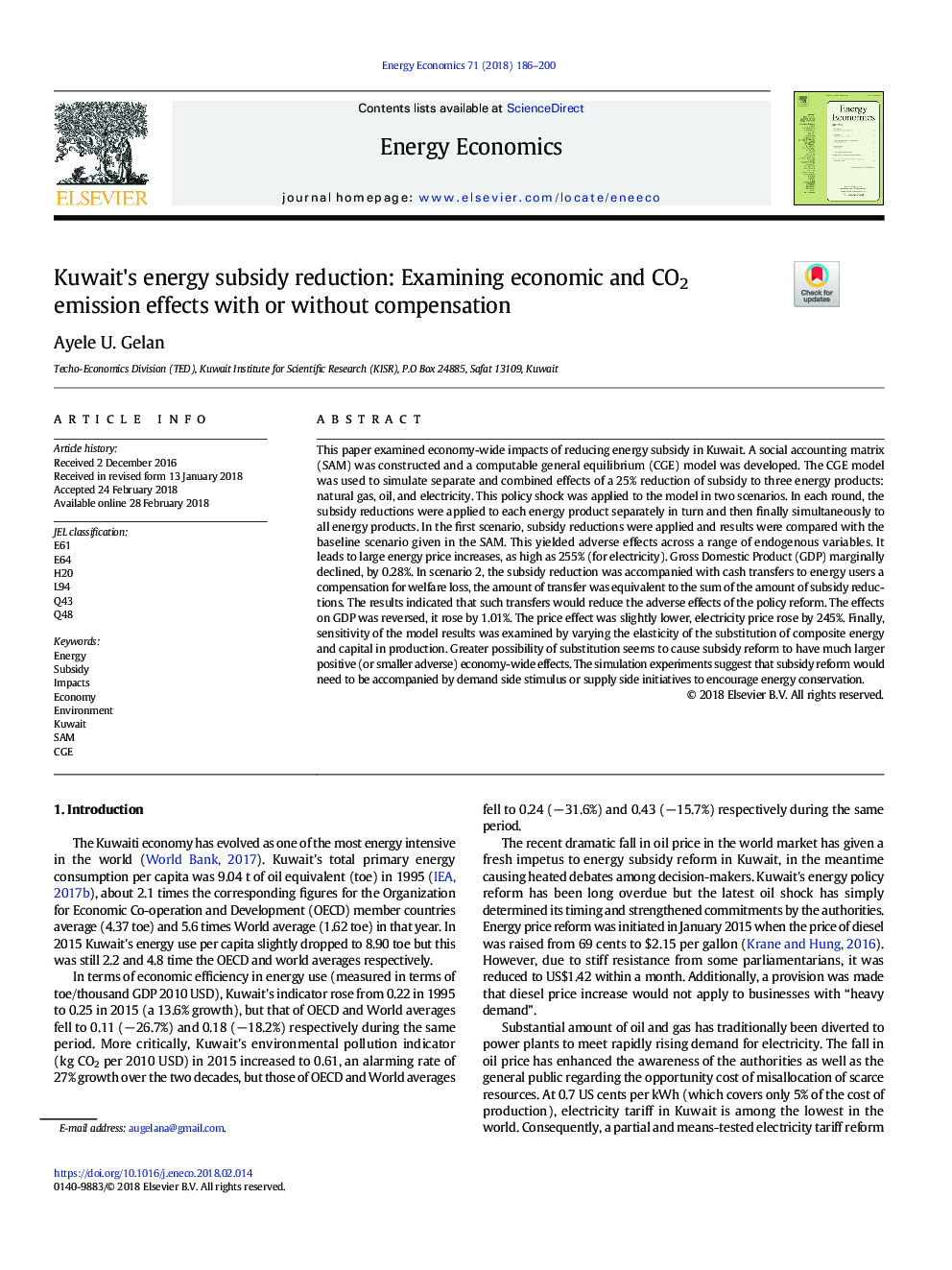| کد مقاله | کد نشریه | سال انتشار | مقاله انگلیسی | نسخه تمام متن |
|---|---|---|---|---|
| 7350747 | 1476692 | 2018 | 15 صفحه PDF | دانلود رایگان |
عنوان انگلیسی مقاله ISI
Kuwait's energy subsidy reduction: Examining economic and CO2 emission effects with or without compensation
دانلود مقاله + سفارش ترجمه
دانلود مقاله ISI انگلیسی
رایگان برای ایرانیان
کلمات کلیدی
موضوعات مرتبط
مهندسی و علوم پایه
مهندسی انرژی
انرژی (عمومی)
پیش نمایش صفحه اول مقاله

چکیده انگلیسی
This paper examined economy-wide impacts of reducing energy subsidy in Kuwait. A social accounting matrix (SAM) was constructed and a computable general equilibrium (CGE) model was developed. The CGE model was used to simulate separate and combined effects of a 25% reduction of subsidy to three energy products: natural gas, oil, and electricity. This policy shock was applied to the model in two scenarios. In each round, the subsidy reductions were applied to each energy product separately in turn and then finally simultaneously to all energy products. In the first scenario, subsidy reductions were applied and results were compared with the baseline scenario given in the SAM. This yielded adverse effects across a range of endogenous variables. It leads to large energy price increases, as high as 255% (for electricity). Gross Domestic Product (GDP) marginally declined, by 0.28%. In scenario 2, the subsidy reduction was accompanied with cash transfers to energy users a compensation for welfare loss, the amount of transfer was equivalent to the sum of the amount of subsidy reductions. The results indicated that such transfers would reduce the adverse effects of the policy reform. The effects on GDP was reversed, it rose by 1.01%. The price effect was slightly lower, electricity price rose by 245%. Finally, sensitivity of the model results was examined by varying the elasticity of the substitution of composite energy and capital in production. Greater possibility of substitution seems to cause subsidy reform to have much larger positive (or smaller adverse) economy-wide effects. The simulation experiments suggest that subsidy reform would need to be accompanied by demand side stimulus or supply side initiatives to encourage energy conservation.
ناشر
Database: Elsevier - ScienceDirect (ساینس دایرکت)
Journal: Energy Economics - Volume 71, March 2018, Pages 186-200
Journal: Energy Economics - Volume 71, March 2018, Pages 186-200
نویسندگان
Ayele U. Gelan,